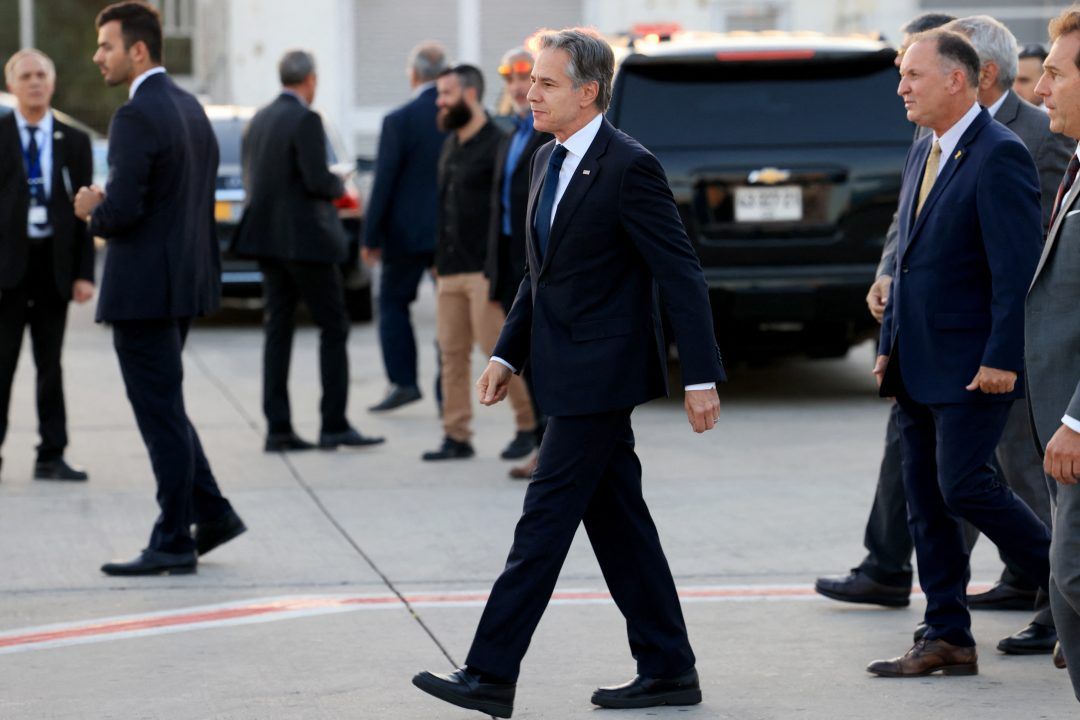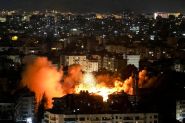- Home
- War in the Middle East
- Doha Ceasefire Talks: What is the Current Situation?

©(Photo by Kevin MOHATT / POOL / AFP)
Gaza ceasefire talks took place in Doha on Thursday, however, initial optimism has dissipated over the weekend as both sides blame each other for the remaining obstacles.
Talks for a ceasefire agreement in Gaza were held in Doha, Qatar, on Thursday, and attended by American, Egyptian, Qatari, and Israeli officials. Discussions on the remaining gaps are set to continue this week.
A source in the Israeli negotiating team told Reuters that Netanyahu has become flexible on a few important issues. Despite this, gaps remain in matters regarding the sustained presence of Israeli troops in Gaza and the hostage situation.
Although Hamas has not been directly present in the negotiations, the group expressed willingness to engage in negotiations if they felt Israel was serious in their pursuit of a deal. Egyptian and Qatari negotiators have also been briefing Hamas representatives in Qatar regarding the deal and working to ensure their agreement.
White House national security spokesperson John Kirby stated that negotiators are concentrating on bridging the gaps and implementing a framework agreement, which, he says, has been "generally accepted" by both sides.
The framework consists of three phases. First, a ceasefire is put in place for 6 weeks during which Israeli troops would withdraw from all populated areas within Gaza. A hostage exchange would also take place in parallel.
The second phase involves the release of all other hostages as well as a permanent end to hostilities. The third phase would then constitute a major reconstruction plan in Gaza as well as the return of the remains of dead hostages.
The international mediators have also announced that a “bridging proposal” was reached.
Details of the proposal have not been made public, however, a Hamas official revealed some of it to the Saudi Asharq News channel.
The source said that the proposal includes a reduced Israeli military presence in the Philadelphi Corridor, which is the strip of land between Gaza and Egypt. It also gives Israel the right to veto the release of up to 100 Palestinian prisoners, but Hamas claims this was not what was agreed upon in early July.
The source also stressed that the proposal gives Israel supervision over the Netzarim Corridor, which splits North and South Gaza, allowing them to vet Gazans moving across. The specific details of this part of the deal remain undetermined, according to the source.
US Secretary of State, Anthony Blinken, arrived in Israel on Monday to pressure Netanyahu to accept the deal, stating that it is “probably the best, maybe the last opportunity to get the hostages home, to get a ceasefire and to put everyone on a better path to enduring peace and security”.
However, optimism has faded in recent days as Hamas and Netanyahu have become firmer in their positions over the weekend
Hamas has recently claimed that they do not believe Netanyahu is serious about a deal and accused him of adding new conditions.
It also claimed that the “bridging proposal” was too favorable to Israel for it to accept the deal.
Netanyahu is adamant about having Israeli troop presence in the Philadelphi Corridor to prevent weapons smuggling, reports Reuters, which has caused a significant disagreement between Hamas and Israel.
As critics claim Netanyahu is stalling talks for political gains, Israeli media is reporting that Netanyahu has met with the negotiating team on Sunday to assess the need for military presence in certain areas within Gaza.
Egyptian officials, speaking to the Associated Press, expect a meeting between Egyptian and Israeli military leaders to discuss withdrawal mechanisms on the Gaza-Egyptian border.
On Sunday, Netanyahu also expressed his sternness regarding the negotiations “We are conducting negotiations and not a scenario in which we just give and give,” adding, “There are things we are flexible on and there are things we cannot be flexible on, which we will insist on. We know how to distinguish between the two very well.”
Summary of the talks
Talks for a ceasefire agreement in Gaza were held in Doha, Qatar, on Thursday, and attended by American, Egyptian, Qatari, and Israeli officials. Discussions on the remaining gaps are set to continue this week.
A source in the Israeli negotiating team told Reuters that Netanyahu has become flexible on a few important issues. Despite this, gaps remain in matters regarding the sustained presence of Israeli troops in Gaza and the hostage situation.
Although Hamas has not been directly present in the negotiations, the group expressed willingness to engage in negotiations if they felt Israel was serious in their pursuit of a deal. Egyptian and Qatari negotiators have also been briefing Hamas representatives in Qatar regarding the deal and working to ensure their agreement.
White House national security spokesperson John Kirby stated that negotiators are concentrating on bridging the gaps and implementing a framework agreement, which, he says, has been "generally accepted" by both sides.
The framework consists of three phases. First, a ceasefire is put in place for 6 weeks during which Israeli troops would withdraw from all populated areas within Gaza. A hostage exchange would also take place in parallel.
The second phase involves the release of all other hostages as well as a permanent end to hostilities. The third phase would then constitute a major reconstruction plan in Gaza as well as the return of the remains of dead hostages.
The international mediators have also announced that a “bridging proposal” was reached.
Details of the proposal have not been made public, however, a Hamas official revealed some of it to the Saudi Asharq News channel.
The source said that the proposal includes a reduced Israeli military presence in the Philadelphi Corridor, which is the strip of land between Gaza and Egypt. It also gives Israel the right to veto the release of up to 100 Palestinian prisoners, but Hamas claims this was not what was agreed upon in early July.
The source also stressed that the proposal gives Israel supervision over the Netzarim Corridor, which splits North and South Gaza, allowing them to vet Gazans moving across. The specific details of this part of the deal remain undetermined, according to the source.
Current Situation
US Secretary of State, Anthony Blinken, arrived in Israel on Monday to pressure Netanyahu to accept the deal, stating that it is “probably the best, maybe the last opportunity to get the hostages home, to get a ceasefire and to put everyone on a better path to enduring peace and security”.
However, optimism has faded in recent days as Hamas and Netanyahu have become firmer in their positions over the weekend
Hamas has recently claimed that they do not believe Netanyahu is serious about a deal and accused him of adding new conditions.
It also claimed that the “bridging proposal” was too favorable to Israel for it to accept the deal.
Netanyahu is adamant about having Israeli troop presence in the Philadelphi Corridor to prevent weapons smuggling, reports Reuters, which has caused a significant disagreement between Hamas and Israel.
As critics claim Netanyahu is stalling talks for political gains, Israeli media is reporting that Netanyahu has met with the negotiating team on Sunday to assess the need for military presence in certain areas within Gaza.
Egyptian officials, speaking to the Associated Press, expect a meeting between Egyptian and Israeli military leaders to discuss withdrawal mechanisms on the Gaza-Egyptian border.
On Sunday, Netanyahu also expressed his sternness regarding the negotiations “We are conducting negotiations and not a scenario in which we just give and give,” adding, “There are things we are flexible on and there are things we cannot be flexible on, which we will insist on. We know how to distinguish between the two very well.”
Read more




Comments